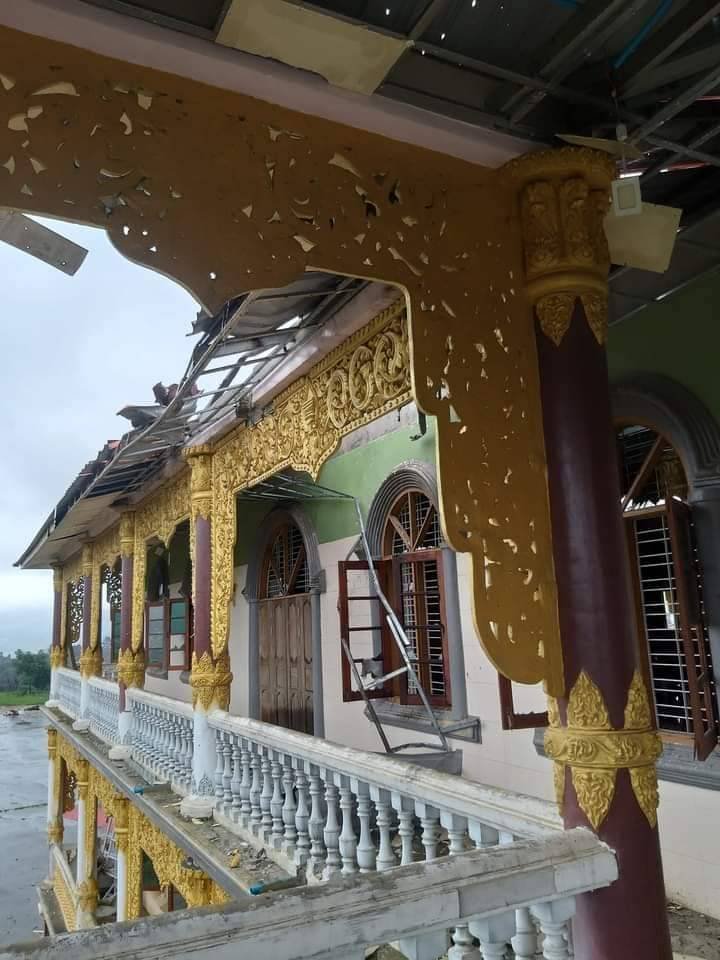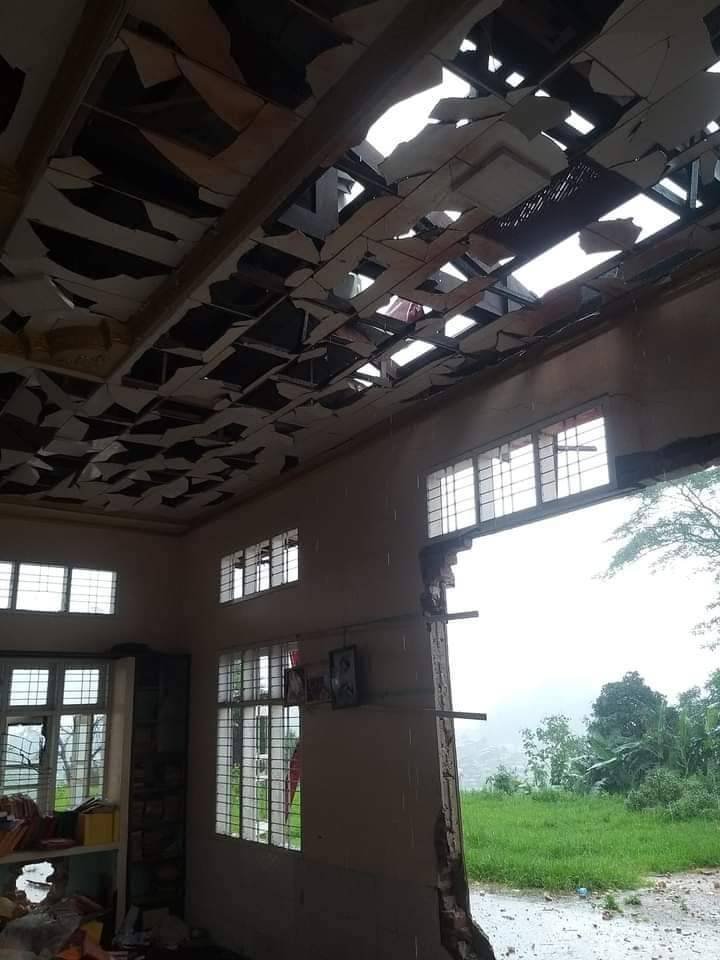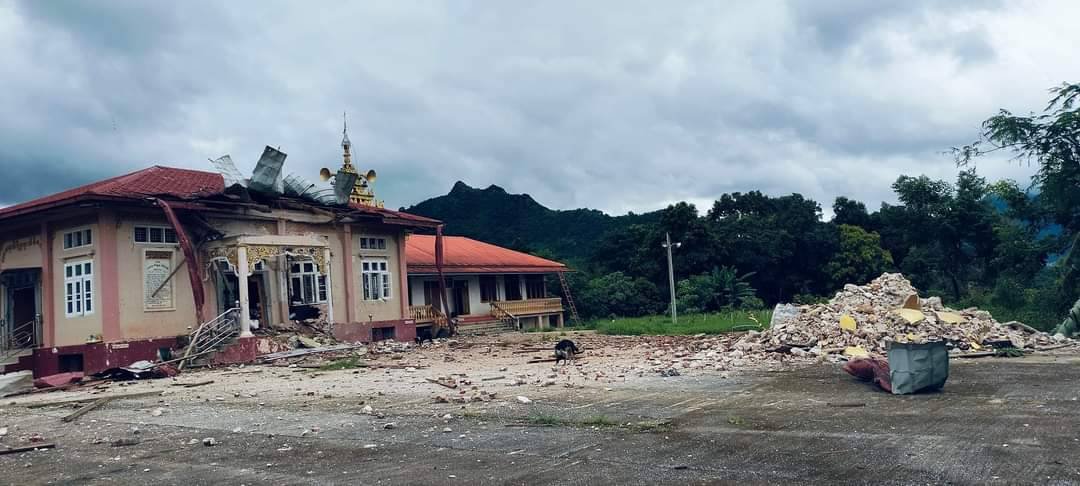Where Even the Dhamma is not Safe
As the conflict in Mogok escalates, a community of monks are facing a harrowing ordeal. They have been forced to flee their monastery, which has been reduced to rubble. In a recent post, our local leader updated us about their grueling journey, one filled with perilous crossings and sleepless nights. They ultimately found a temporary refuge near Mount Popa, where over a hundred monastics now shelter in uncertainty. With the Vassa period binding them to their new location, these monastics now find themselves in desperate need of food and shelter. The abbot, his voice heavy with sorrow, has vowed to return to Mogok once peace is restored … though he doesn't know when that day will come. The story of these monks, a powerful testament to resilience amid tragedy, cries out for urgent support from the global community. We share an update on this situation below.
“This Dhamma Hall was where the teachings of the Buddha were passed on to the next generation. It was also where the State Counsellor Daw Aung San Suu Kyi once attended a big ceremony for 1,000 young novices during her time in office!”
Today, I received some of the most painful news from Mogok. The monk I’ve been speaking with shared details about the terrible destruction that happened at Nyaung Thone Bin Monastery. This place was once full of peace and learning, where thousands of monks practiced and studied. But now, it is almost completely gone. Hearing about this and seeing the photos and videos, I felt so much sadness and shock. For someone like me who follows the Buddha as much as I can in my daily life, it’s very hard to accept that such a holy place could be destroyed in this way.
Here are just some of the horrifying details: The Dhamma Hall at the monastery, where around 2,000 monks could gather, was destroyed. And this was not just any hall—it was where the teachings of the Buddha were passed on to the next generation, where people came to learn and grow spiritually. It was also where the State Counsellor Daw Aung San Suu Kyi once attended a big ordination ceremony for over 1,000 young novices during her time in office! But now, the roof is broken open by artillery shells, and rainwater has flooded the inside. Just thinking about this makes my heart heavy. I cannot describe the sorrow I feel seeing such an important place in ruins.
The monk told me about this with so much pain in his voice. It’s not just a building that has been destroyed; it’s a place that held so much spiritual value. In our culture, monasteries are more than just structures—they are places that hold the heart of the Dhamma, where monks and devotees come to find peace and guidance. To see a place like this destroyed is like seeing something sacred being violated. It’s very hard to accept.
The monks who lived there had no choice but to flee. Now, they are living in a small monastery near Mount Popa, where there is not enough space, and the buildings are old and not safe. It is the Vassa period now, a time when monks usually stay in one place to practice deeply. But instead, these monks are struggling to find a place to stay and continue their practice. They do not know when they can go back, and the leading monks have decided that they cannot rebuild the monastery until things are safer in Mogok. They know that trying to rebuild now could bring more danger from the junta, so they must wait, even though it is very painful for them.
The monks have asked me to share this story with international meditators, in the hope that foreign yogis will understand their situation and offer whatever support may be possible through our networks.
The destruction of Nyaung Thone Bin Monastery is a very sad event that affects all of us who follow the Dhamma. It shows how much suffering this conflict is causing, especially to those who have dedicated their lives to spiritual practice. If you feel moved by this story and want to help these monks during their time of need, please consider making a donation, as we are working hard now to look after them. Every contribution, no matter how small, can make a big difference in providing food, shelter, and support to these displaced monastics. Your generosity will not only help them survive this difficult time but also give them hope for the future, when they can return to rebuild their sacred monastery.









